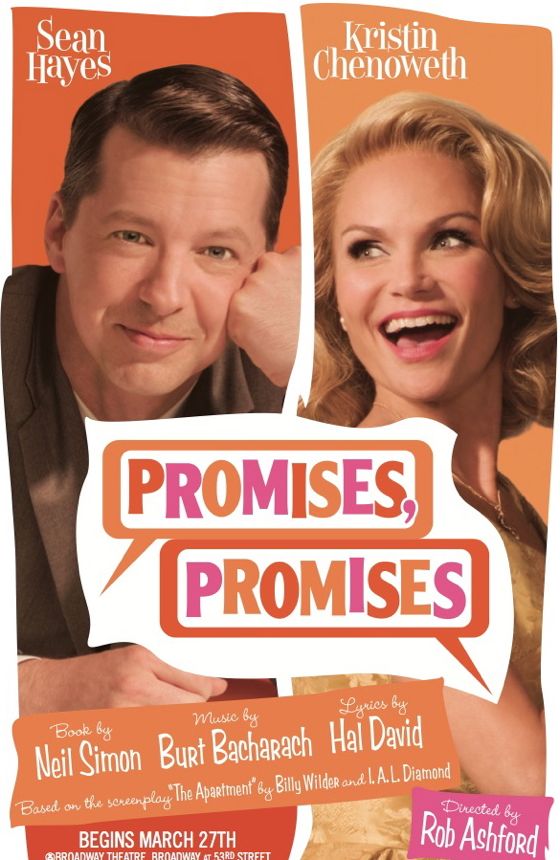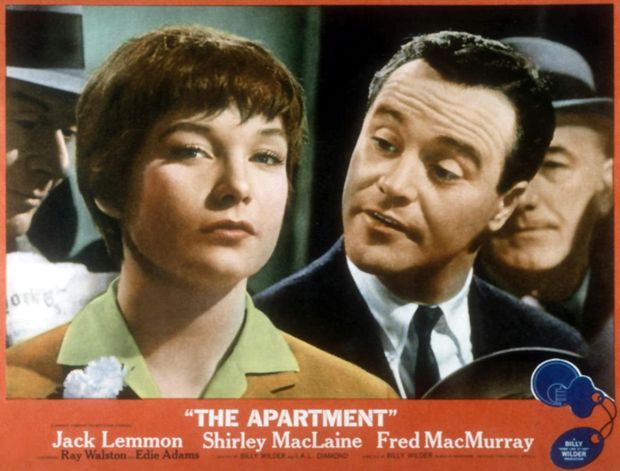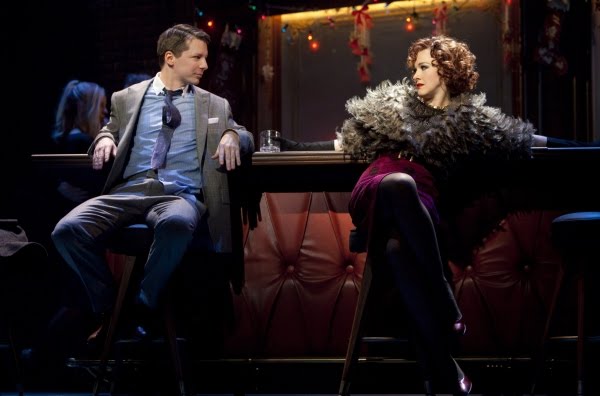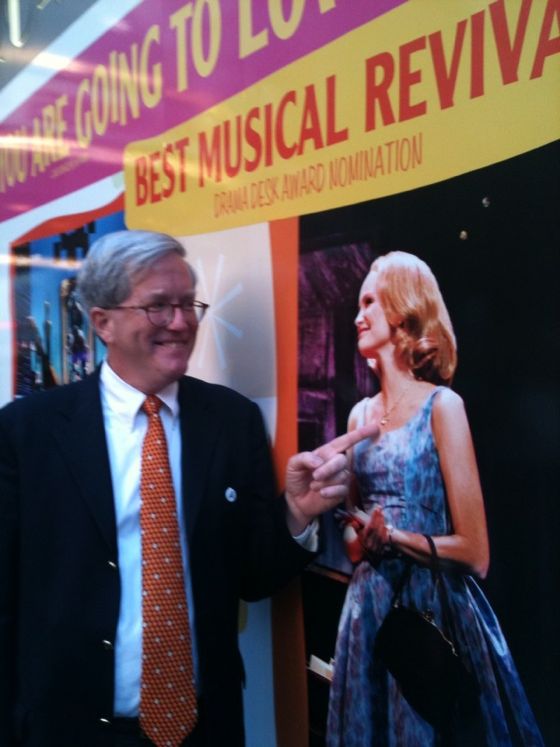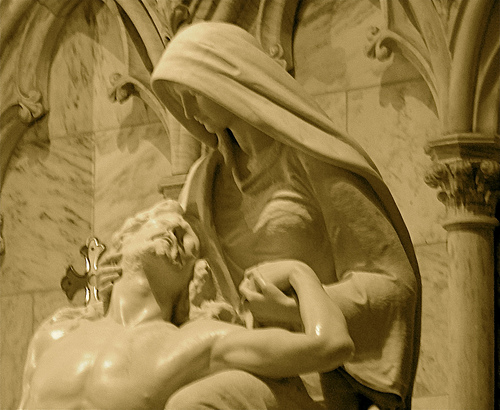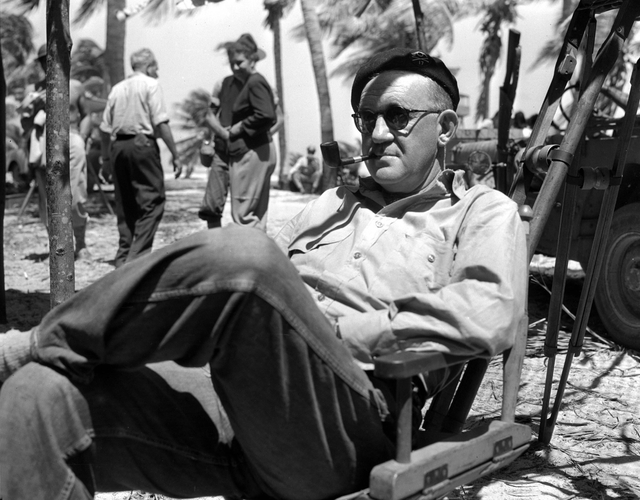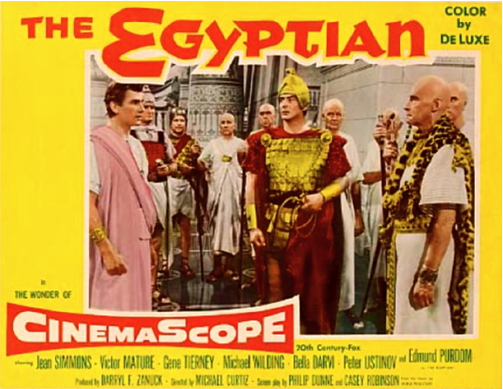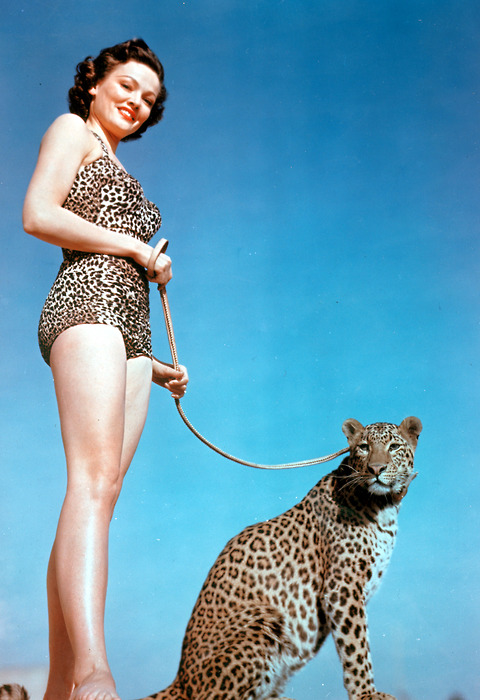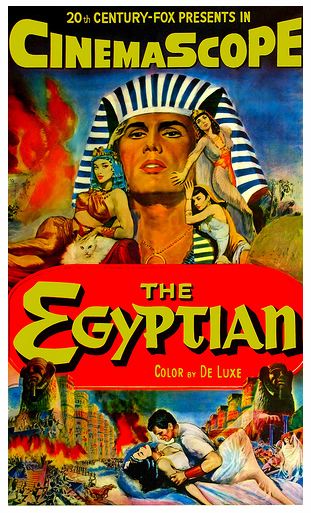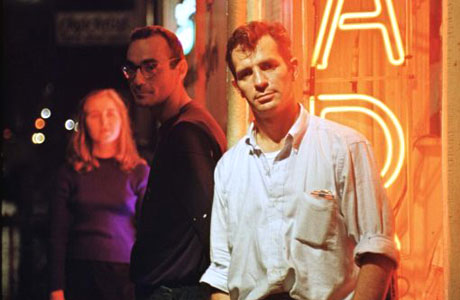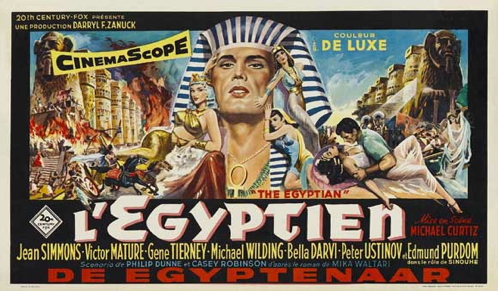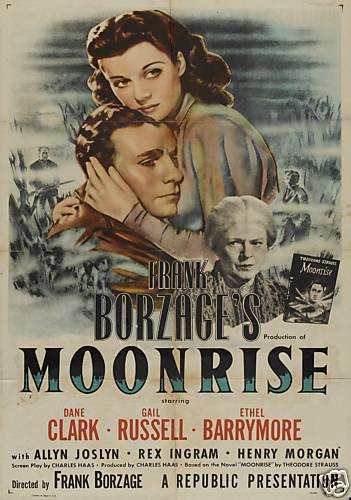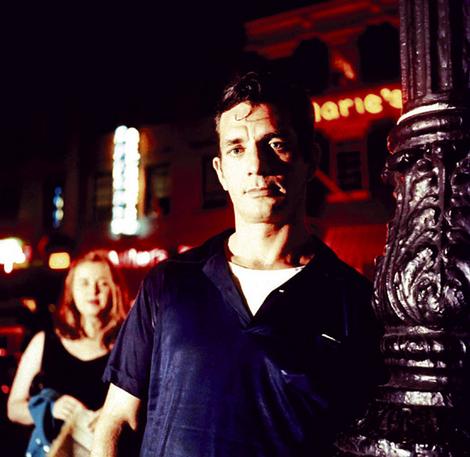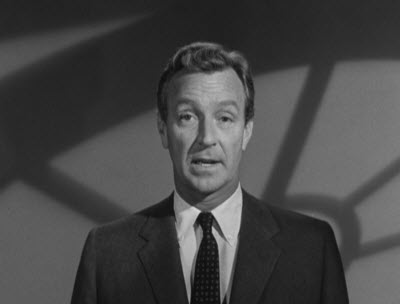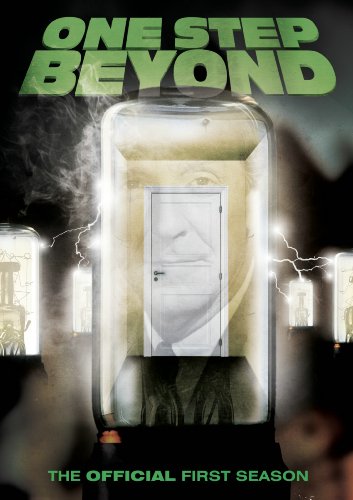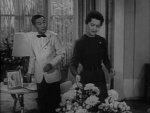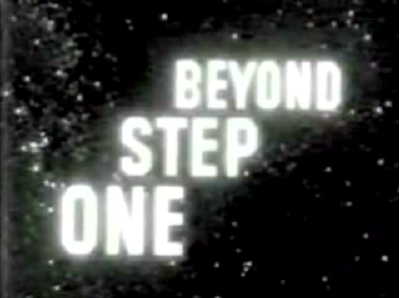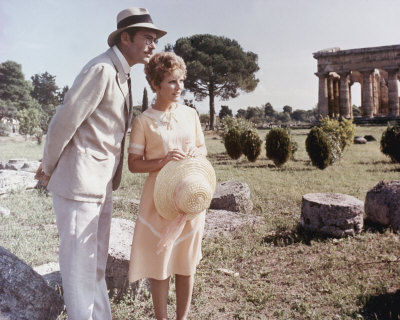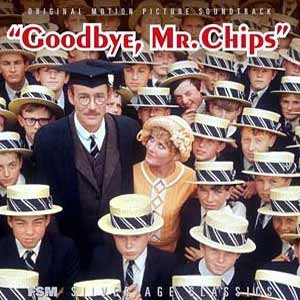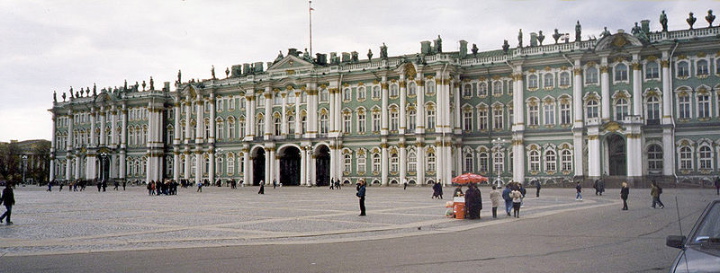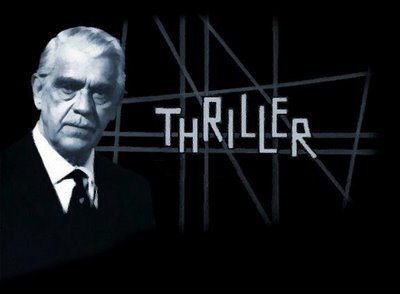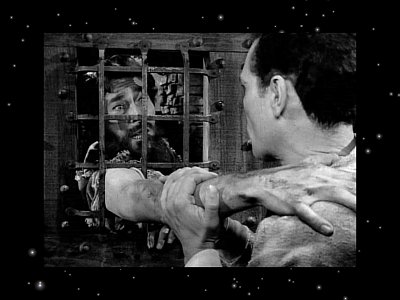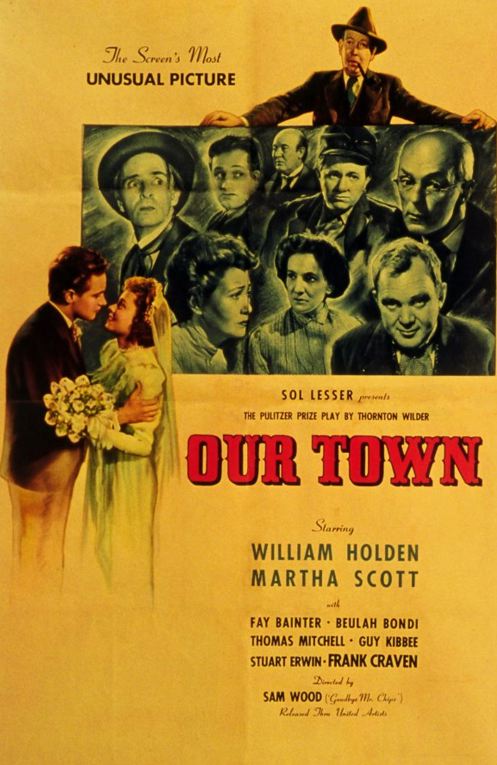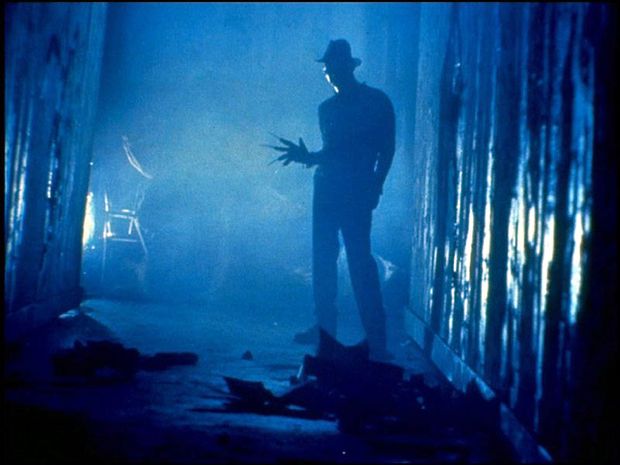
Part two of Paul Zahl's essay on the novel By Love Possessed and its screen adaptation:
A NIGHTMARE ON ELM STREET (Part Two)
Arthur Winner's “nightmare on Elm Street” begins when a Roman Catholic
lady friend of Marjorie Penrose attempts to convert him to the true
church in the setting of a rose garden that bears remorseful memories of his
affair with Marjorie, the wife of his law partner. This Mrs. Pratt
corners Arthur Winner and very skillfully, and craftily, turns the
conversation in the direction of his past sins, which Marjorie has
apparently confessed to her. Just when the Man of Reason thinks he is,
as usual, in quiet control of things, Mrs. Pratt harpoons him. She spears him straight to the heart: “Thou art the man”. Arthur
Winner is only saved from complete humiliation by the appearance, in
the underbrush, of a snake!
From this point on, the humbled hero of By Love Possessed is so fully
de-constructed that he has no choice but to take his famous literary
walk from the steps of Christ Church (Episcopal), where he has been
ushering at the Sunday morning service and where he is to become the
next Senior Warden, over to the crucial Detweiler House, then past the
Courthouse and the Christ Church again, past his law office, past
the Union League Club (moribund and soon to close), past the
storefronts of Main Street and beyond, up the street where the old
families of Brocton used to live, right up to the entrance of the house
in which he was born and where his mother still lives, to make his
great and ever remembered (for those who read the book) entrance,
calling upstairs to his aunt, his mother, and his wife.
This is Arthur's nightmare, a universal dereliction of disillusionment,
by which he must catch at hope in a new way. I, for one, find the last
five pages of By Love Possessed satisfying, real, and ennobling. They
took me by surprise. I think about them every day.
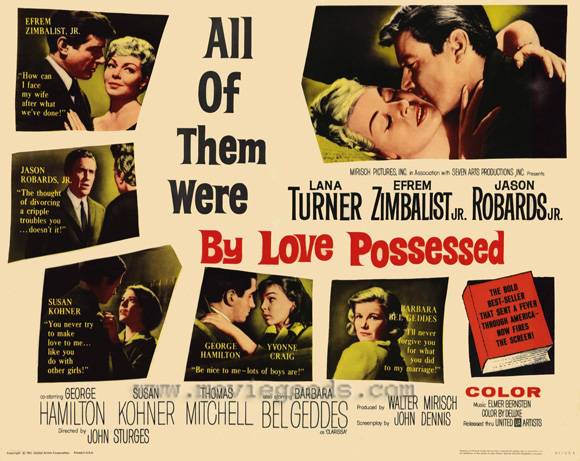
How does the movie version envisage the emotionally overwhelming finish
of the book? The answer is, not very well. As Cozzens himself
remarked, in his journal entry describing his second viewing of the
movie in Williamstown, the script writer had collapsed some characters,
and had to diminish the inwardness of the book. So much of this novel
is inner dialogue, inner qualifyings, inner voices of contradiction,
and association; inner asides, both cruel and kind. Thus the
cascading, baroque language of the book is lost in the movie. Of
course it is lost. The visual image is not the same as the written
word.
In its ambitious attempt to put this complicated story in a narrative
without flashback, into a linear tale which takes you somewhere, the
movie fails. I don't see how anyone would really dissent from that
judgment. By Love Possessed The Movie flattens everything out. It
has only its story to tell, brick by brick, or step by step. No one
has gotten inside the story and then developed it cinematically, either
through the composition or the editing. The building and billowing
mood of the book, and also the philosophy of resignation that the book
embodies: they're not on film.
Only in two sections, so far as I can see, do the director and crew get
under the story, to what it is really about — which is the shipwreck
of love that attempts to possess, the forms of love that try to possess
the loved object. Loving that possesses the lover, and thus is about
the lover rather than the beloved — whether it be the love of a parent
for a child, of a husband for a wife, of a high-school girlfriend for
her selfish boyfriend, of an old patrician man for his reputation in
the town, or, in a case so important to this novel, of a “responsible”
older sister for her feckless younger brother — possessive love makes
catastrophes of human relationships. The book is about the victory, in
utter failure, of a man who overcomes the possessiveness of love in
order to, well, live, and then, counter-intuitively, love. That man is
Arthur Winner. What Arthur Winner stumbles on, you might say, is the
victory of resignation, the acquiescence of defeat which results in a
simple solution of simply taking the next step in good faith.
Only in two sections of By Love Possessed The Movie is the deeper
interest of this material expressed visually. There's a lot more
footage outside of these two sections, but it has an almost indifferent
quality of detachment (the wrong kind), which is not philosophical
detachment but rather, “I think we'd better film this thing as quickly
as possible, grin and bear it, and get our product into theaters while
people can still remember reading the book a couple years ago.”
The one section of the film that catches some fire is the scene of
Marjorie Penrose (Lana Turner) coming on strong to Arthur Winner (Efrem
Zimbalist, Jr.) in the Victorian “wedding cake” summer house behind his
home in Roylan, the little enclave just outside Brocton where the
professional families live. This is a memorable scene in the book,
persuasively underlined by thunder and lightning, the last heat of
summer in the autumn leaves, and the very beautiful garden building in
which the conversation takes place. The set dressers here, the sound
effects and music, the roll of the fallen leaves, the effective and
dramatic lighting, and the two performances themselves all come
together to evoke the spirit of the book. I guess there is nothing
particularly cinematic to see, neither in the camera movements nor in
the editing. But the technicolor style, with that swirling music, kind
of takes your breath away. For five minutes. I imagine James Gould
Cozzens was pleased with this scene. The message of the scene( if it
could be put into words?): A nice and ordered Georgian garden with a
decorous Victorian summer house, and it's all about to be ruined, by a
love that possesses its demoniacs.
The second and for my money the only other sequence in By Love
Possessed The Movie that works, is the opening credits. They are very
good. Why very good? Because they capture, in just a few expertly
edited exterior shots and one long pan, the emotional, geographical
context of the story, this story of one man's struggle to find the
answer to the question of how and also why it can be possible to live
in the presence of hope. The camera shows two churches around the town
square, one Episcopal, one “mainstream” Protestant; the Court House;
the Union League Club, dying home to the old and increasingly few first
families of Brocton; and a few old and tired 19th Century mansions
still in use. It feels a little like the main square of Columbus,
Ohio, tho' smaller; or the main square of Columbus, Georgia, about the
same size. Then, at the end of the credits, as “Directed by John
Sturges” flickers on, and off, you see Arthur Winner, briskly but not
hurriedly, calmly but not unconcerned, striding, or rather, simply
walking, across that “Brocton Square”.
The credits for By Love Possessed The Movie capture the atmosphere the
book projects. They are the high point of the film.
“Ain't that peculiar? (Peculiar as can be)”: The story is fully
captured in “second unit” work, with not a word spoken nor any
exposition offered.
There is a lot you could say about this. We have a book that is
possibly great — its controversy never diminished its claim, not
self-made, to gravity. By Love Possessed, I repeat, is a grave and
serious book. We also have a movie version that was probably produced
simply and almost only to capitalize financially on the popular success
of the novel. And so the movie tells its story, the best it can,
having to cut the inwardness of the source, the complexity of the plot,
several important characters, and certainly the religious concerns of
the source. (The Episcopal church in Brocton, together with its young
, well educated, and sincere if inexperienced Rector, The Reverend
Whitmore Trowbridge, S. T. D., figures importantly in By Love Possessed;
and Cozzens's depiction of a Sunday service of Morning Prayer is
absolutely the last word in clinical portraits of what they are
actually like. I know what they are like.) There is nothing
controversial in the movie version — no anti-Catholicism, no “Uncle
Toms”, no intolerant remarks about New York lawyers from the failing,
unsteady patriarch Noah Tuttle, none of that! Only the references to
sex have been kept, but even there, oddly enough, the better sex is in
the book and describes a happily married couple making love.
Here I close. Let me confess something. I love this movie! It's not
very good; it is actually boring; the camera set-ups and pacing are
perfunctory; the actors sleep-walk through their parts, with the
exception of Efrem Zimbalist, Jr., who does convey the vulnerable
actuality of Arthur Winner; and the conclusion is rushed and overly
happy. (The ending of the book is hopeful, but not happy.) Yet I love
this movie.
Why? Because it connects in visual form with some of the constructions
my imagination had made on the basis of the words. The town, the lead
character, the meeting by night in the summer house, the gushing,
oceanic music — these are there, right up in front of you.
If Orson Welles had made this, it would have been a completely
different result. It would not have been the book at all. Or it would
have really been the book. If John Ford had made it . . . well, John Ford never would have made it.
As it is, we have John Sturges's big but little piece of work. Although
I will probably keep the novel with me until the day I die, and though
I make no claims for the turgid tired movie it spun off, I will probably still keep the movie under my pillow, for the next six months.

